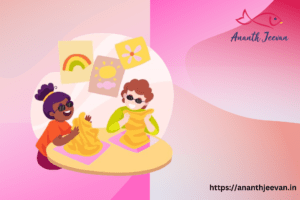 Art therapy in psychology is a form of therapy that utilizes creative expression through art making to improve a person’s mental health and well-being. It is the use of artistic activities, such as painting and clay modeling, in psychotherapy and rehabilitation. The process of making art is seen as healing, an experience that provides the opportunity to express oneself imaginatively, authentically, and spontaneously; over time, this process can lead to personal fulfillment, emotional reparation, and transformation. The products made in art therapy are seen as a means of symbolic communication and a vehicle for developing new insights and understandings, resolving conflicts, solving problems, and formulating new perceptions to achieve positive changes, growth, and rehabilitation.
Art therapy in psychology is a form of therapy that utilizes creative expression through art making to improve a person’s mental health and well-being. It is the use of artistic activities, such as painting and clay modeling, in psychotherapy and rehabilitation. The process of making art is seen as healing, an experience that provides the opportunity to express oneself imaginatively, authentically, and spontaneously; over time, this process can lead to personal fulfillment, emotional reparation, and transformation. The products made in art therapy are seen as a means of symbolic communication and a vehicle for developing new insights and understandings, resolving conflicts, solving problems, and formulating new perceptions to achieve positive changes, growth, and rehabilitation.
Many ask how art therapy can work. How does art therapy work simply by using different colors and materials? Many psychological research studies indicate that art therapy has helped individuals with depression, low self-esteem, trauma, and anxiety to cope and communicate better. Art therapy is also administered to people with serious health conditions, like cancer, as a coping skill. Individuals who are in mental health care facilities or prisons are also given art therapy. Art therapy can also help people who are experiencing physical pain during hospitalization. Evidence also shows that it can be effective for post-traumatic stress disorder.
People who make art in any form, whether they consider themselves artists or not, are taking part in a process of self-discovery that gives them a safe space to express their feelings. Furthermore, it allows them to feel more in control over their life. This creative process is enjoyable in its own right, but this is not the only activity that goes on in an art therapy session.
Different kinds of art therapy
- Painting
- Drawing
- Finger painting
- Working with clay
- Carving
- Sculpting
- Doodling and scribbling
- Making collages
- Clay
- Photography
Regardless of artistic experience or talent, a 2016 study that was published in the Journal of the American Art Therapy Association found that engaging in creative activities for less than an hour can lower stress and improve mental health. A diverse range of artistic techniques, such as collage, painting, sculpting, and sketching, can be employed by an art therapist with individuals spanning from young children to elderly folks. Creative expression can be helpful for those who have dealt with psychological disorders such as anxiety, despair, physical violence, emotional trauma, and domestic abuse.
Some things to remember in art therapy
- You don’t have to be artistic or gifted in doing art work.
It is not an art class. - Art therapy can happen any place but with the guidance of an art therapist.
- Art therapy will not be applicable for everyone.
- Art therapy is applicable for any age group.
Benefits of Art therapy
- Alleviate the painful symptoms.
- Reduce stress
- Enhance communication
- Improve coping ability
- Reduce anxiety
- Stimulate creativity and imagination which can help in generating problem solving and solutions to the issues the client is dealing.
- Cultivate resilience
- Health way of expressing emotions.
Art therapy can be used to support people with
- Mood disorders
- Anxiety disorders
- Autism
- ADHD
- તણાવ
- Substance abuse
- Cancer
- Trauma
Share
Here to help
If you need help, Ananth Jeevan is here.
Call our helpline (+91-9063-Jeevan)+91-9063533826 to talk to our counsellors
Download the AJ App (on Android and AppStore )
For Counselling appointments, use our WhatsApp number ![]()
Email Us


